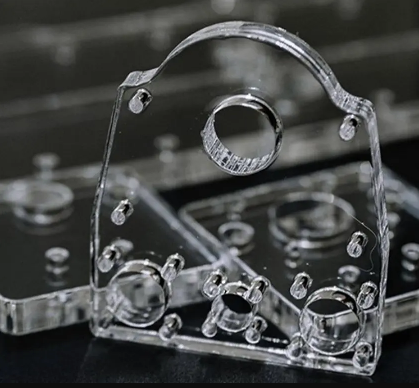 Polymer injection molding is a popular approach for developing resilient, clear, and lightweight parts. Its versatility and resilience make it a superb option for numerous applications, from vehicle elements to consumer electronic devices. In this guide, we’ll check out why acrylic is a top option for shot molding, exactly how to make components efficiently, and whether acrylic shot molding is suitable for your following task.
Polymer injection molding is a popular approach for developing resilient, clear, and lightweight parts. Its versatility and resilience make it a superb option for numerous applications, from vehicle elements to consumer electronic devices. In this guide, we’ll check out why acrylic is a top option for shot molding, exactly how to make components efficiently, and whether acrylic shot molding is suitable for your following task.
Why utilize polymer for injection molding?
Polymer, or Poly( methyl methacrylate) (PMMA), is a synthetic plastic renowned for its glass-like clarity, weather condition resistance, and dimensional security. It’s an excellent material for products that require both aesthetic allure and longevity. Right here’s why acrylic stick out in injection molding:
Optical Openness: It uses a light passage in between 91% -93%, making it an outstanding replacement for glass in applications calling for clear presence.
Weather Resistance: Polymer’s all-natural resistance to UV light and moisture makes sure that it remains clear and secure also in outdoor environments.
Dimensional Stability: It maintains its sizes and shape regularly, which is crucial for high-volume production runs where tooling can use and problems may differ.
Chemical Resistance: It’s resistant to numerous chemicals, consisting of detergents and hydrocarbons, making it appropriate for industrial and transportation-related usages.
Recyclability: Acrylic is 100% recyclable, offering an eco-friendly alternative that can be repurposed at the end of its preliminary lifecycle.
How to Layout Parts for Polymer Injection Molding
When making parts for acrylic shot molding, mindful consideration of certain elements can help decrease defects and make sure a successful production run.
Wall Densityeeping
a regular wall surface thickness is vital in acrylic injection molding. The advised thickness for acrylic components varies in between 0.025 and 0.150 inches (0.635 to 3.81 mm). Uniform wall surface density helps reduce the danger of warping and guarantees better mold filling. Thinner walls also cool much faster, reducing contraction and cycle times.
Product Behavior & Usage
Polymer items have to be designed with their meant usage and atmosphere in mind. Factors like creep, fatigue, wear, and weathering can impact the durability of the item. As an example, if the component is anticipated to sustain substantial tension or ecological exposure, picking a durable quality and thinking about added therapies can improve efficiency.
Radii
To improve moldability and minimize stress and anxiety focus, it’s essential to avoid sharp edges in your style. For acrylic parts, maintaining a radius equal to at the very least 25% of the wall surface thickness is advised. For optimal toughness, a radius equal to 60% of the wall thickness should be made use of. This strategy aids in protecting against cracks and enhancing the general sturdiness of the component.
Draft Angle
Like various other injection-molded plastics, acrylic components need a draft angle to ensure simple ejection from the mold and mildew. A draft angle in between 0.5 ° and 1 ° is normally adequate. However, for sleek surfaces, especially those that need to remain optically clear, a better draft angle might be essential to avoid damages during ejection.
Part Tolerance
Polymer injection-molded parts can attain great tolerances, particularly for smaller components. For parts under 160 mm, industrial resistances can vary from 0.1 to 0.325 mm, while great resistances of 0.045 to 0.145 mm are achievable for parts smaller sized than 100 mm. These tolerances are critical for applications needing accuracy and uniformity.
Shrinking
Shrinking is a natural part of the injection molding process, and polymer is no exception. It has a relatively low shrinkage rate of 0.4% to 0.61%, which is valuable for maintaining dimensional accuracy. To represent shrinking, mold and mildew designs need to include this factor, considering aspects like injection stress, melt temperature, and cooling time.
Post time: Oct-21-2024


